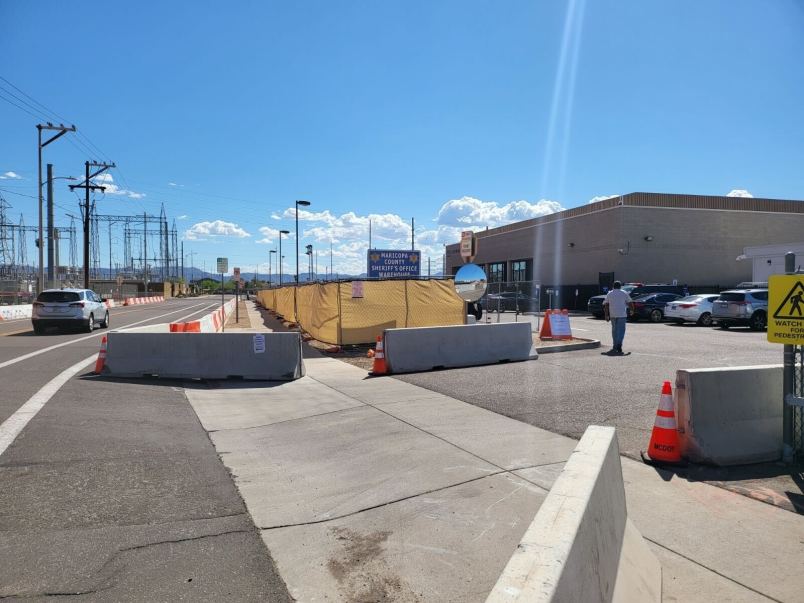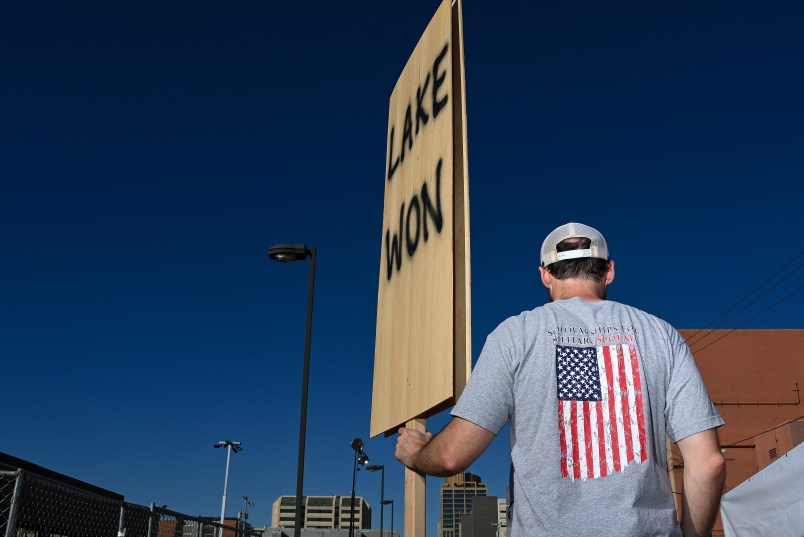Earlier this month, Maricopa County Recorder Stephen Richer found himself explaining to voters how and why the county “can’t just register Mickey Mouse or your dog,” to vote in Arizona.
Richer was responding to a live question from a voter about the early voting process and how it works “if you don’t check identification” during his first ever “Ask Me Anything” session on X Spaces, formerly known as Twitter Spaces, and Facebook Live. Richer explained that Maricopa County has an extensive verification process for sending out early ballots and for confirming that all voters are indeed real people.
During the Q&A session, which was held on election day for two Maricopa County jurisdictions and lasted around 30 minutes, another voter wanted to know if the county had implemented any new fraud prevention measures so that “we trust elections again.”
Richer outlined the ways in which his office is trying to make people more aware of measures that are already in place and that will only be enhanced ahead of November 2024: more cameras, requiring badge access for all rooms in the vote center, enhancing the department’s cybersecurity footprint, to name just a few.
It’s part of an ongoing effort for Richer, who is currently pursuing a defamation lawsuit against failed Arizona gubernatorial candidate and election denier Kari Lake, to get as much good information out about the upcoming election as possible. He calls it the “kitchen sink approach.” In addition to the AMA sessions, Richer has also been giving curious voters tours of the central election centers where ballot processing, signature verification, and tabulation occurs, answering hundreds of emails from voters every week, sending out newsletters and responding to misinformation on Twitter, among other things.
“We’re not matching the volume I don’t think, in terms of good election information versus bad election information,” Richer told TPM. “Across the country, we need to keep telling stories. We need to keep answering questions, we need to keep coming up with other mediums.”
But in his county, it’s especially crucial.
Maricopa County has been a hotbed of election conspiracy theories and violence against election workers since the 2020 election. In both 2020 and 2022, Donald Trump and his allies, including Lake, spread false claims about signature verification mismatches, voter tabulators, and voting machines in Maricopa County. And as recently as this month, Lake, along with former Secretary of State candidate and election denier Mark Finchem, filed a petition to the Supreme Court seeking to outlaw electronic voting in the state. The conspiracy theories and relentless belief by some MAGA supporters that the 2020 election was stolen from Donald Trump has led to a barrage of violent death threats aimed at Arizona election officials.
These efforts to educate voters and get ahead of misinformation in 2024 are just one part of a larger plan by election officials in Arizona’s largest county to protect its voters and its officials ahead of November.
“I hope that more and more Arizonans feel like they have at least some information at their disposal,” Richer said.
It’s a multi-part initiative between election officials and law enforcement to limit misinformation, thereby limiting the threat to physical danger against officials and voters. County officials have witnessed a correlation between the two.
“We oftentimes see an increase in threats or actual physical incursions, when the misinformation increases,” Maricopa County supervisor Bill Gates told TPM. “There’s a clear relationship between the two.”
On top of getting out ahead of misinformation, Maricopa’s election administrators have also had to renovate voting infrastructure in response to 2020. The county’s tabulation center, for example, is almost unrecognizable from that of 2020.
The center, with its heightened security measures, now resembles, in Gates’s words, “an encampment.” After experiencing a “Lollapalooza for the Alt-right” when Fox News called Maricopa County for President Biden in 2020, Gates stressed that the center now has permanent fencing, a badge requirement to even enter the parking lot as well as additional badges to enter the building, metal detectors upon entering the building, and netting on the temporary fencing in the parking lot so that voters cannot take pictures of election workers or their license plates.

The parking lot outside the Maricopa County tabulation center, featuring protective fencing and barricades. Photo taken by Maricopa County Supervisor Bill Gates.
“It’s sad, but it’s what we have to do,” Gates added. “This is the hill that must be protected.”
Security measures look different at polling places, however, as election administrators have to find a balance between security and not unintentionally creating an environment where voters feel intimidated. In Maricopa, there will be a sizable presence of undercover law enforcement, in order to avoid concerns about creating any sort of “militarized feeling,” Gates said.
“We felt that it’s very important that there not be a show of force at the vote centers,” he said, “because unfortunately, that could lead some to being discouraged to vote.”
Maricopa County Sheriff Russ Skinner described planning the security leading up to this year’s election as preparing for the Super Bowl or World Series.
“We get all the law enforcement agencies partnered together,” he said. “We have regular meetings to discuss any intelligence, any social media concerns out here in Arizona.”
In 2020, Skinner noted, the tabulation center was a more vulnerable location because at the time it lacked fencing like it has now.
It’s difficult to say exactly how November will play out, but Richer hopes that “people behave well.”
And in the meantime, Richer said the best path forward, especially in the face of misinformation, is to continue to put out good information.
“I think we need to keep getting our word out too,” he said.







It’s a shame that free and fair elections have to now be tabulated behind gates and fences because of numbskull MAGATS.
You can’t spell “crazy” without “R AZ”.
The steps they’re taking in Maricopa County should be studied and possibly duplicated in all the large counties in the swing states. There’s no question that the Orange Asshole (and draft dodger) and his Maggots will claim a “steal” if he loses the election, and try to foment a nation-wide rebellion. The best way to avoid this would be to have a soft law enforcement presence at the Tabulation centers,. and to require training classes for all “observers,” to avoid nonsensical objections.
All this stress on people working the system, all this extra money on security could be avoided if states vote like we do in WA with 100% vote-by-mail. It’s been proven to expand the franchise in our state, and it completely eliminates any voter or poll worker intimidation. We get two weeks to study the voter info pamphlet and make a decision, then the ballots go out through the mail or local drop boxes.
There could still be wingnut conspiracies about how the votes are tabulated, but because it’s done at a far remove from the voter and not in local tabulation centers like the one in Maricopa County, it’s less likely to draw this kind of attention and threat.
I know some people like the “civic duty”" aspect of voting in person at the polls, but it’s an antiquated system that harms people with work schedules or illness that makes it hard to get to the polls. and leads to potential intimidation and security threats like this. Every state should vote-by-mail, it just works.
completely? no, voters can still be intimidated, just in their own homes.
I’m in no way against vote by mail, I’ve been doing it myself since 2020. But you can’t say it’s without any downside. There will always be some voters who may find more freedom in a voting booth than at their kitchen table.